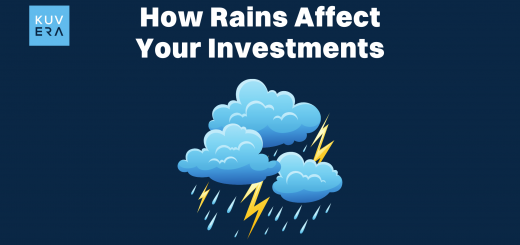Ever found yourself questioning whether your mutual fund is performing as well as it should? The answer lies in understanding benchmarks! Just as athletes measure their progress against records, investors need to know if and how their funds stack up against the right benchmarks. Let’s explore the benchmarking rules for mutual funds.
Adoption of Total Return Indices (TRI): A Zoomed-out View of Performance

The watershed moment in measuring mutual fund performance came in 2018 when SEBI mandated that benchmarking be shifted from Price Return Indices (PRI) to Total Return Indices (TRI). While PRI only tracked stock price movements, TRIs included dividends and other gains along with price movements. It’s like tracking your savings by only looking at how much money you put in the bank while ignoring the interest that’s been accumulating. Without considering the interest, you’re missing out on the full picture of your financial growth!
SEBI’s logic was simple: since mutual funds reinvest dividends, their benchmarks should too. This change made performance comparisons fairer and more accurate.
For funds where TRI data was unavailable for the entire period, a composite CAGR figure was used.
The Two-Tier Benchmarking System: Beyond the Basics
SEBI has also implemented a two-tier benchmarking system where each fund has a primary benchmark and an optional secondary benchmark. Under this system, the Tier 1 benchmark indicates the scheme’s category, while the optional Tier 2 benchmark demonstrates the fund manager’s specific investment strategy within that category. For example, a large-cap fund might use the Nifty 100 as its Tier 1 benchmark, but if it focuses on value investing, it might use a value index as its Tier 2 benchmark.
Types of Benchmarks: Finding the Right Fit for your Mutual Fund
You wouldn’t use a thermometer to measure your weight. That’s why you could be using the wrong index to benchmark your fund.
SEBI and the Association of Mutual Funds in India (AMFI) have created a standardised list of indices that fund houses can select as Tier 1 benchmarks for various fund categories. Examples are as below:
| Debt | Equity | Equity – Sectoral | Equity – Thematic | Hybrid Schemes | Solution-oriented |
|---|---|---|---|---|---|
| NIFTY Short Duration Debt Index A-II | NIFTY 100 | NIFTY Auto | Nifty100 ESG Index | NIFTY 50 Hybrid Composite debt 50:50 Index | Nifty500 Plus Nifty Short Duration Debt Index A-II -2035 |
| NIFTY Medium Duration Debt Index A-III | NIFTY Large Midcap 250 | NIFTY Consumer Durable | Nifty Housing Index | CRISIL Hybrid 35+65 Aggressive Index | BSE 500 |
| NIFTY Corporate Bond Index A-II | BSE 100 | BSE Consumer Durables | BSE India Infrastructure | CRISIL Arbitrage Index | |
| BSE 500 |
Benchmarking Mutual Funds: Choosing Effectiveness over luck
Appropriate benchmarking helps you determine whether your fund manager is earning their fees or just riding market waves.
The shift to TRI benchmarks made a significant difference in how fund performance is perceived. Several funds that seemed to be beating their benchmarks under PRI were actually underperforming when measured against TRI.
Further, the two-tier structure further refines this comparison, helping investors understand not just whether a fund is performing well in its category, but whether its specific strategy is effective.
Tracking Error: How closely does your Fund follow the Benchmark?
Tracking error indicates the consistency of investment performance against a benchmark over a given period of time. You can think of tracking errors like following a recipe while cooking. It measures how much your “dish” (the fund’s performance) strays from the original recipe (the benchmark). A low tracking error means you’re cooking it just right!
Tracking error is calculated as the standard deviation of the difference between portfolio returns and benchmark returns over a specific period. Assume that the mutual fund XYZ is benchmarked against S&P 500 and realised the following returns over a given five-year period:
- XYZ: 10%, 12%, 9%, 11% and 8%.
- S&P 500 index: 12%, 5%, 13%, 9% and 7%.
Given this data, the series of differences is then -2%, 7%, -4%, 2%, and 1%. The standard deviation of this series of differences, the tracking error, is 3.76%.
Tracking error is crucial to evaluate how well the performance of a passive fund (like an index fund or ETF) mirrors its benchmark. While a low tracking error indicates the fund closely follows the benchmark, a high tracking error suggests inefficiencies or deviations due to factors like transaction costs, rebalancing delays, or cash drag.
Recent Developments: SEBI never sleeps
SEBI continues to refine its benchmarking rules. In July 2024, it introduced new regulations for passively managed funds like ETFs and index funds. Mutual funds are restricted from investing more than 25% of net assets in the listed securities of the sponsor’s group companies. But equity-oriented ETFs and index funds are an exception and can invest up to 35% in sponsor groups of companies as long as they track widely followed, non-customised indices. These changes allow passive funds to more closely mirror their respective indices, especially when sponsor group companies make up a significant portion of those indices. With this adjustment, SEBI aims to create a level playing field among asset management companies (AMCs) and improve investment strategies for passive funds.
Let us look at an example to make this clearer. If you are investing in PQR Midcap Index Fund and it has PQR Pharmaceuticals comprising 20% of its total weightage. The PQR Midcap Index Fund can now allocate up to 35% of its NAV to this stock, enhancing its ability to track the index effectively.
SEBI has identified 21 key indices based on Assets Under Management (AUM) data, including popular benchmarks like the Nifty 500, Nifty 50, and BSE 500. The list will be reviewed every two years and be published on its website by April 15 and October 15 of each year.
Wrapping Up
SEBI’s benchmarking rules have significantly improved transparency and comparability in the mutual fund industry. From mandating TRIs to implementing a two-tier structure and standardising benchmarks across categories, these changes help investors make more informed decisions.
As an investor, understanding these benchmarking rules can help you better evaluate fund performance and choose investments that align with your goals. After all, in the investment world, context is everything – much like claiming you won a marathon when you were actually running a 5K!
Interested in how we think about the markets?
Read more: Zen And The Art Of Investing
Watch here: Is UPI Killing the Toffee Business?












